Washing a car by hand takes a lot of time. A sponge wash cleans most surfaces, yet dust hides in trims and dirt clings to rims. The best pressure washer for car detailing can fix that problem in minutes.
A pressure washer sprays a steady stream of water at a safe speed onto your car surface. This loosens and removes mud, dust, and road grime without heavy scrubbing. It can also reach tricky spots you cannot clean well by hand, like the front grill, door handles, or behind the wheels.
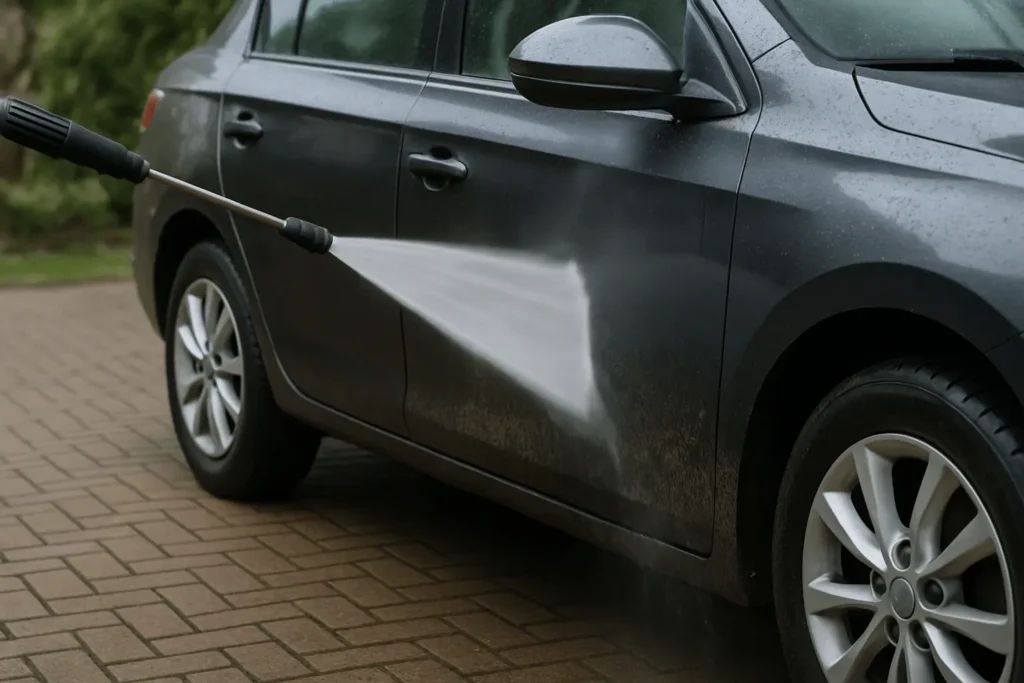
Using one not only saves time but also uses less water than a normal hose. And because the water does most of the work, your arms will not get as tired, and your paint is safer from scratches caused by dirt rubbing under a sponge.
Key Features to Look For in a Car Detailing Pressure Washer
When choosing a pressure washer for car detailing, it is not just about picking the strongest one. The right features will help you clean faster, save effort, and keep your car paint safe.
Water Pressure
Pick a washer that is powerful enough to remove dirt but gentle enough to avoid damaging the paint or rubber trims. For most car owners, a medium-powered electric washer is all needed for great results.
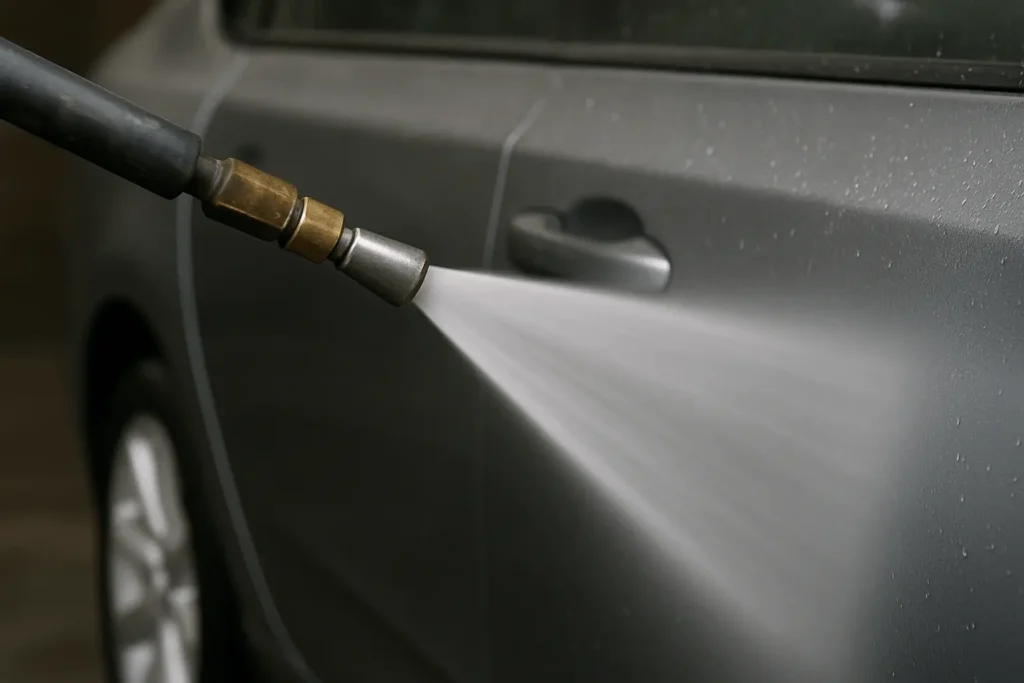
Washer Type
If you wash your car early in the morning or live in a quiet area, go for a model that runs quietly. Washers are of two types:
- Electric washers: Light, simple to use, and perfect for home cleaning.
- Gas washers: Heavier, more powerful, and better for big, tough jobs.
Portability
A lightweight, compact washer is easier to move around the car and store when you are done. Look for one with wheels or a carry handle so you do not have to lift it often.
Spray Tips
Wide spray tips are ideal for large areas like doors, while narrow tips help remove stubborn dirt from tight spots. Having a variety of tips gives you more cleaning flexibility.
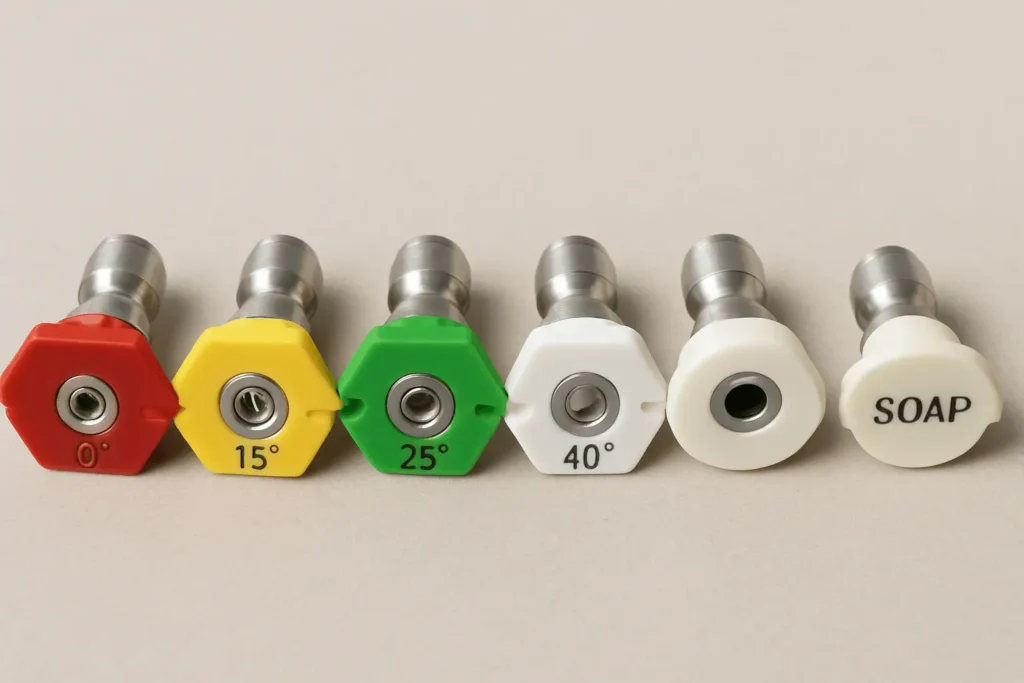
Soap Bottle Attachment
A soap bottle attachment lets you cover your car in foam quickly. This helps loosen dirt before rinsing, making the cleaning process easier and more effective.
Choosing the Right Pressure Washer Size for Your Needs
Pressure washers come in different sizes, and bigger is not always better. If you only wash one or two cars at home, a small, light washer is usually enough. It is easy to store, easy to carry, and costs less to use.
Big washers handle tough cleaning well. Ideal for washing many cars or big areas such as driveways and patios, they do require extra space and can be heavy to move.
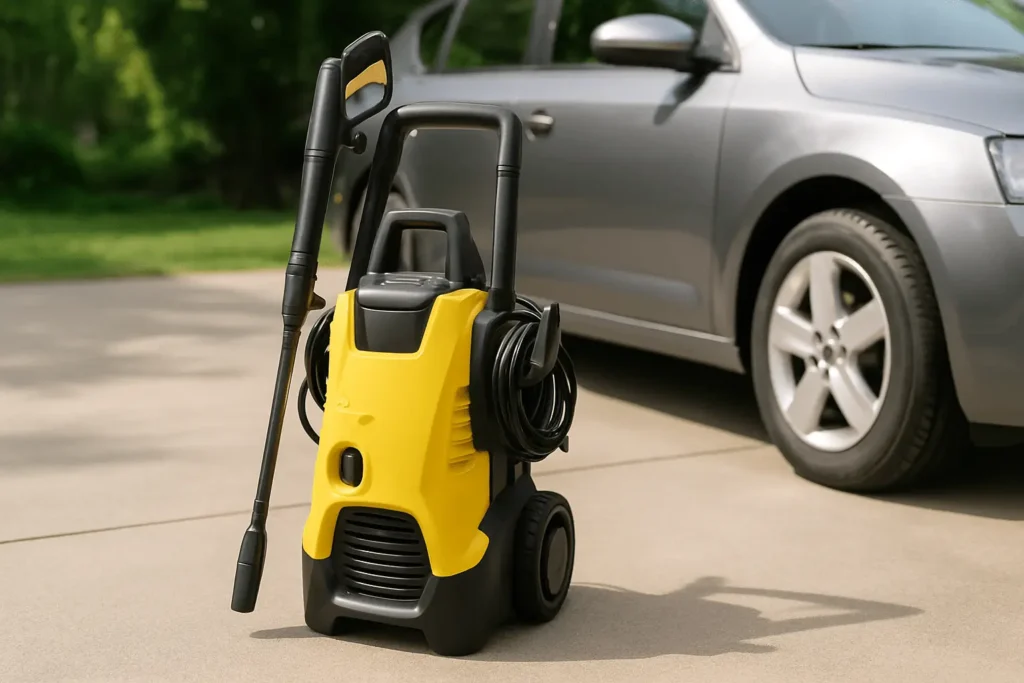
Before buying, consider how often the car will be washed, where the washer will be stored, and whether it will be used for other cleaning jobs. Choosing the right size will help you clean well without wasting money or storage space.
Pro Tip: If you are not sure which size to buy, pick a medium-sized electric washer. It is strong enough for cars and small home jobs, but still easy to store and move.
Pressure Washer Setup for Auto Detailing
The right pressure washer setup makes washing a car faster, safer, and less tiring. When all tools are ready before starting, the whole car can be cleaned without stopping to look for equipment.
Pressure Washer Gun
The pressure washer gun is the main handle that controls where the water goes and how fast it sprays.
Example: Use it to wash dirt off the doors, roof, and windows.
Foam Cannon
A foam cannon mixes soap and water to make thick foam that sticks to the car. The foam softens dirt so it can be rinsed away without scratching the paint.
Example: Spray foam over the whole car before rinsing to loosen mud and dust.
Undercarriage Washer
An undercarriage washer sprays water upward to clean the bottom of the car. It removes mud, salt, and dirt that build up underneath.
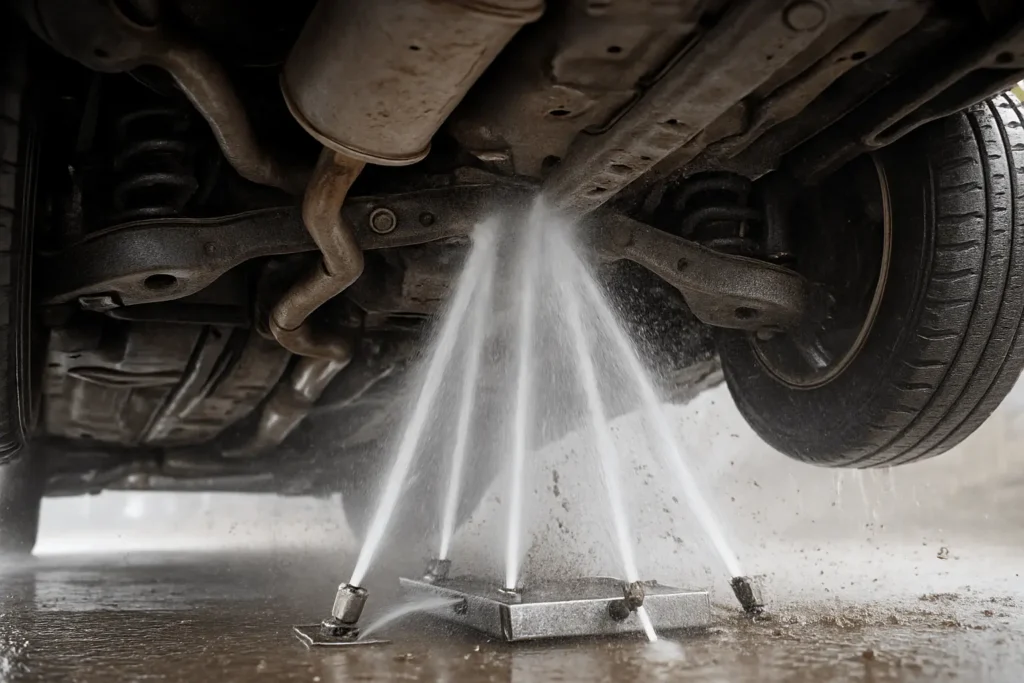
Example: After driving on muddy or snowy roads, use it to wash the underside of the car.
Air Compressor
An air compressor blows water out of small spaces like mirrors, grills, and trims. This helps the car dry faster and prevents water spots.
Example: After rinsing, use it to blow water out from around door handles and mirrors.
Steam Washer
A steam washer uses hot steam instead of strong water pressure. It is gentle on delicate parts and can clean without strong chemicals.
Example: Use it for cleaning inside door frames or for removing sticky spots without damaging the paint.
X-Jet M5 Spray Tip
The X-Jet M5 spray tip lets you change the water pattern without swapping parts. This saves time and makes cleaning easier.
Example: Switch from a wide spray for doors to a narrow spray for stubborn dirt.
How to Use a Pressure Washer on Your Car Safely
Using a pressure washer the right way keeps your car shiny and prevents damage to the paint. Follow these simple steps for a safe, effective wash.
Step 1: Set the Right Water Pressure
Keep the pressure gentle and strong enough to remove dirt, but not so strong that it damages the paint or rubber trims. For most cars, a medium setting works best.
Start by holding the spray tip about 2-3 feet from the car, then move closer if needed. The narrowest nozzle should be avoided, as it can damage the paint.
Step 2: Pre-Rinse the Car
Start by rinsing the whole car with clean water. This removes loose dust, sand, and dirt before you start scrubbing.
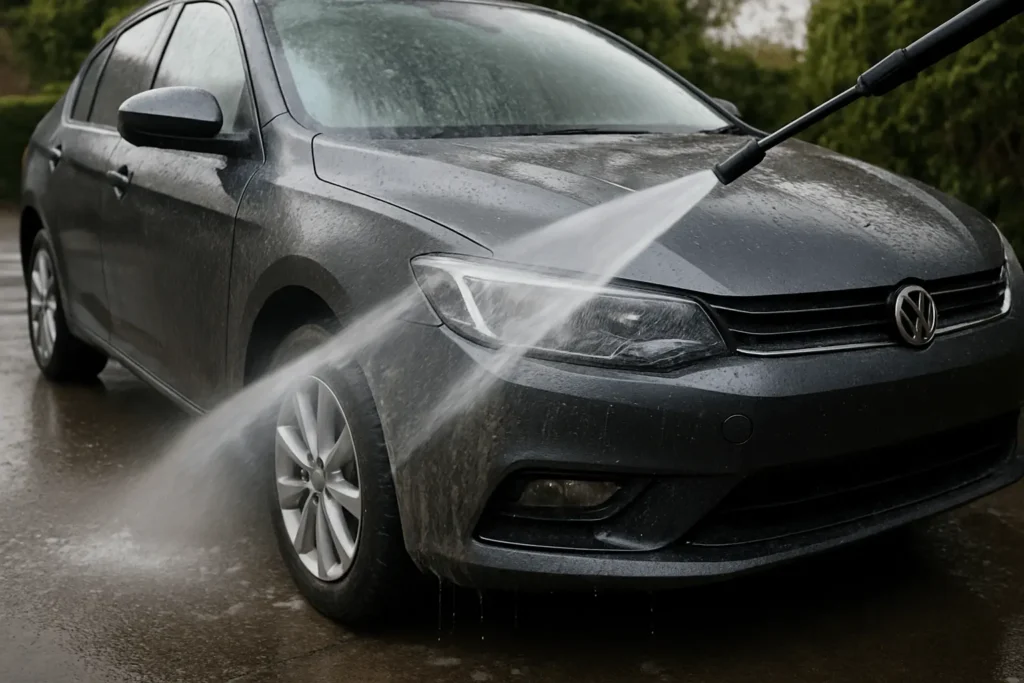
If you skip this step, dirt can scratch the paint when you wash with soap. Move the spray from top to bottom so the dirt flows down and off the car.
Step 3: Apply Foam or Soap
Use a foam cannon or soap bottle attachment to cover the car with a thick layer of foam. The foam softens dried mud and grime, making it easier to rinse away.
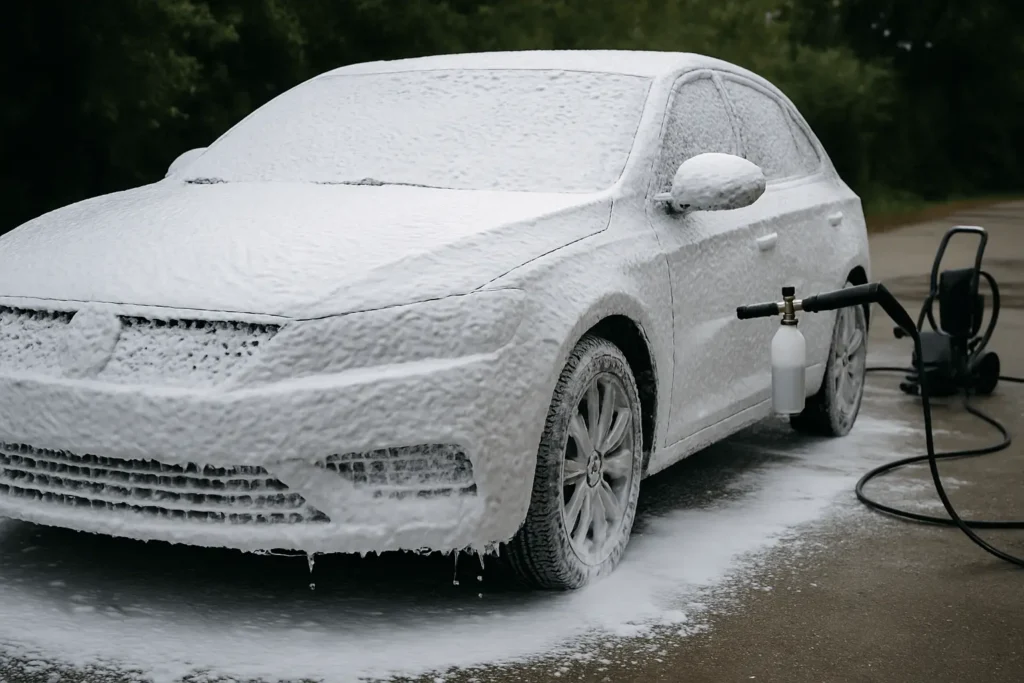
Let the foam sit for a minute or two, but do not let it dry under the sun, dried soap can leave marks.
Step 4: Rinse From Top to Bottom
Rinse the car starting from the roof, then work your way down. This way, dirt from the top does not run onto clean areas.
Use smooth, steady movements and keep the nozzle moving to avoid water pressure focusing too long on one spot.
Step 5: Dry the Car Properly
After rinsing, dry the car with a clean, soft microfiber towel. This prevents water spots and streaks.
You can also use a small blower to push water out of tight spots like mirrors, grills, and door handles so they do not drip later.
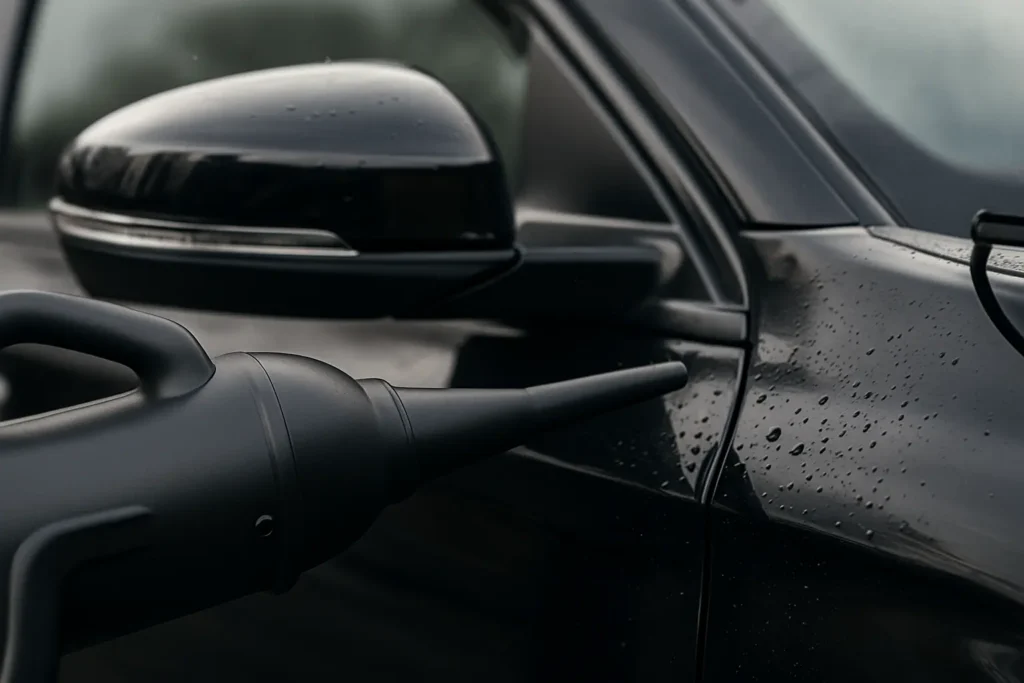
Step 6: Avoid Common Mistakes
Never spray too close to badges, mirrors, or rubber seals, water pressure can loosen them.
Do not stay in one place for too long, and avoid washing under direct, hot sunlight to prevent soap and water marks.
Is Car Detailing a Good Choice?
Car detailing is more than just washing a car. It means taking care of the car so it stays clean, shiny, and fresh for a long time. With the right tools, you can clean both the outside and the inside, making every part look and feel nice.
What Professional Detailing Does
Professional car detailing goes further than normal home washing. It can include polishing the paint to make it shine, cleaning seats, carpets, and the dashboard thoroughly, and adding a ceramic coating. This coating works like a strong shield to protect the car from sun, rain, dirt, and small scratches.
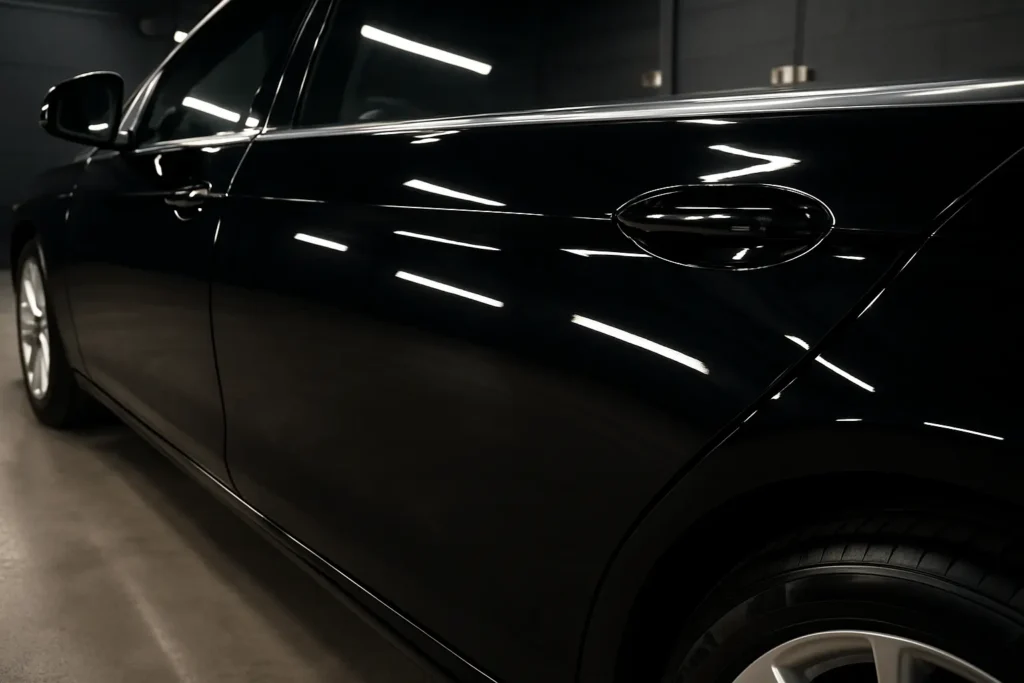
Example: At home, you might just wash the car and wipe the dashboard. A professional detailer would polish the paint, clean under the seats, and add a protective coating.
Why Detailing Is a Smart Choice
Detailing costs more than a simple car wash, but it can save money over time. A well-kept car stays shiny, is nicer to drive, and usually sells for a better price if it is sold later.
Tip: To save money, start with a DIY detail at home using car soap, microfiber towels, and a small foam cannon. It keeps the car clean and shiny. For deeper cleaning or extra protection, hire a professional once or twice a year.
Cleaning the car yourself or hiring a professional is a smart way to keep it looking great and lasting longer.
What PSI pressure washer is best for car detailing?
For most cars, a pressure washer between 1,200 and 1,900 PSI works best. It is strong enough to remove dirt but gentle enough to avoid damaging paint or trims.
What factors should I consider when choosing a pressure washer for car detailing?
Check the pressure (PSI), water flow (GPM), and portability. For car detailing, 1,200-1,900 PSI, 1.5-2.5 GPM, and a lightweight electric washer is usually enough. Cleaning units are less important for regular car cleaning.
Which brand of pressure washer is best?
Some top options are:
1. Simpson PS3228 PowerShot is the best overall.
2. Craftsman CMEPW1900 gives the best value.
3. DeWalt DWPW3000 is the most powerful electric washer.
4. Sun Joe SPX 3000 Xtream is ideal for light duty.
Which pressure washer is good for a car wash business?
The AR BlueClean AR630 is popular. It is electric, portable, has good cleaning power, and allows chemical injection for extra cleaning.
Is a 2,000 PSI pressure washer safe for car detailing?
2,000 PSI can clean effectively, but staying between 1,200–1,900 PSI is safer to avoid paint or trim damage.
Can a pressure washer damage car paint?
Pressure washers are safe if used correctly. Keep the pressure moderate, use a wide spray tip, and hold the nozzle at a distance from the surface.
Can you pressure wash windows?
Yes, with care. Use 1,300–2,000 PSI and a wide-angle nozzle. Keep the spray at a safe distance, especially for older or delicate glass.
Can you pressure wash a car with ceramic coating?
Yes. Ceramic coatings are strong, but use 1,200–1,900 PSI and stay at least 12 inches away. Avoid focusing on one spot too long.
What are the disadvantages of a pressure washer?
Using high-pressure water incorrectly can harm car paint, trim, or protective coatings and lead to rust or electrical problems.
